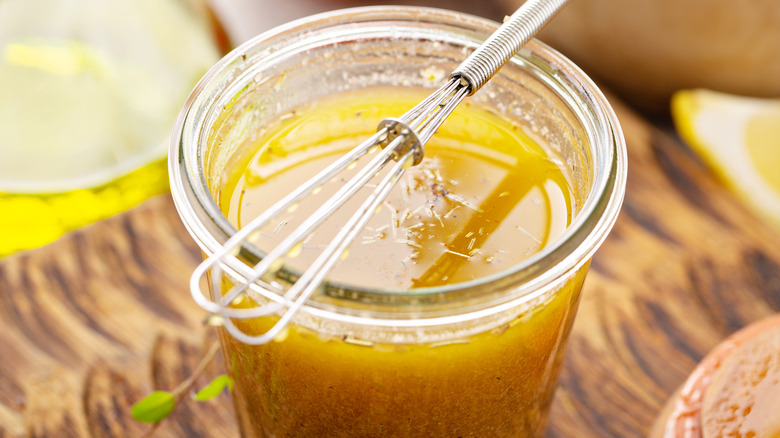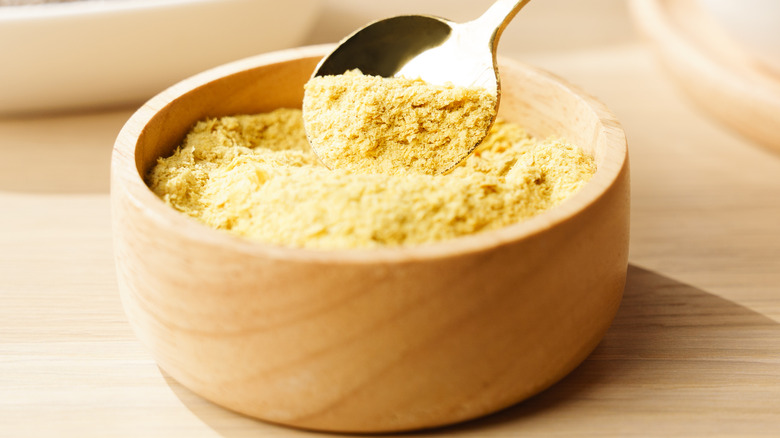Nutritional Yeast Is The Pantry Ingredient You Need For Superior Salad Dressing
There are so many reasons why you should always have nutritional yeast in your pantry – but, unlike active dry yeast, none of them have to do with bread-making. Nutritional yeast is best known as the vegan alternative for cheese, since it doesn't contain animal products and has a distinct savory flavor reminiscent of parmesan. Plus it's yellow, which helps the brain comprehend the comparison. Unlike the yeast you'd use to whip up a loaf of fresh bread, the nutritional variety is dried and deactivated using heat, so it's used solely for flavor purposes instead of for making your baked goods rise.
But it's not just for vegans. It can be added to traditionally cheesy dishes (think grilled cheese or mac and cheese) to amplify the flavor even more. You can also add it to a range of salad dressings to bring thickness and a savory boost. It comes in flake or powder form, so it's tiny enough to whisk seamlessly into liquid ingredients like oil and vinegar. And using nutritional yeast provides a host of nutritional benefits (hence the name). Not only is it a complete protein packed with B vitamins, but it is also a source of minerals like zinc and manganese.
How to use nutritional yeast in salad dressings
Since nutritional yeast has a noted cheesy flavor, it works well in creamy dressings. Try pairing it with savory, umami-rich ingredients and a thicker element for an ideal combo to coat salads with. An oil and vinegar base is always a good place to start, but you can amp your dressing up with salt, pepper, garlic, soy sauce, lemon juice, Dijon mustard, and ground flaxseed, along with something like Greek yogurt, tahini, buttermilk, or mayo. Simply whisk your nutritional yeast into the mix. Or remove the creamy element entirely and stick with an elevated version of a vinaigrette, where nutritional yeast will still bring a little thickness.
You can also swap out the cheese in any dairy-based dressings with this ingredient to make them plant-based. For instance, replicate your favorite bottle of store-bought Italian three-cheese dressing at home by replacing the parmesan, Romano, and asiago with a hefty sprinkle of nutritional yeast. Or change the freshly grated Parmigiano-Reggiano in a Caesar salad dressing for the cheesy yeast. But you don't have to limit yourself to using it in plant-based recipes — there's nothing wrong with adding more cheesy flavor to a dressing that already uses the real thing. And when it's time to serve your salad, you can even sprinkle a little extra on top.

